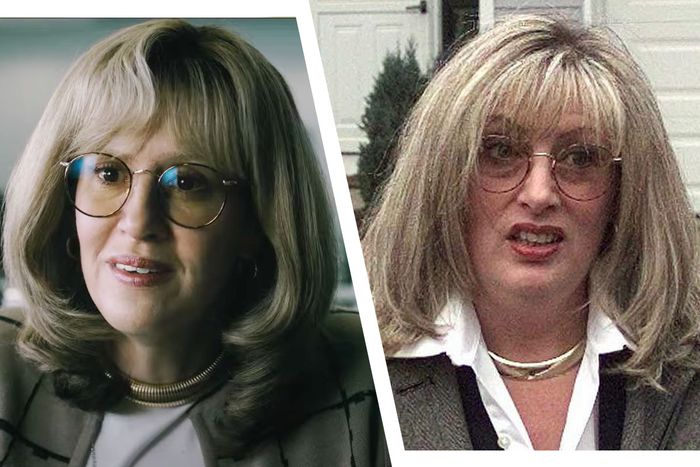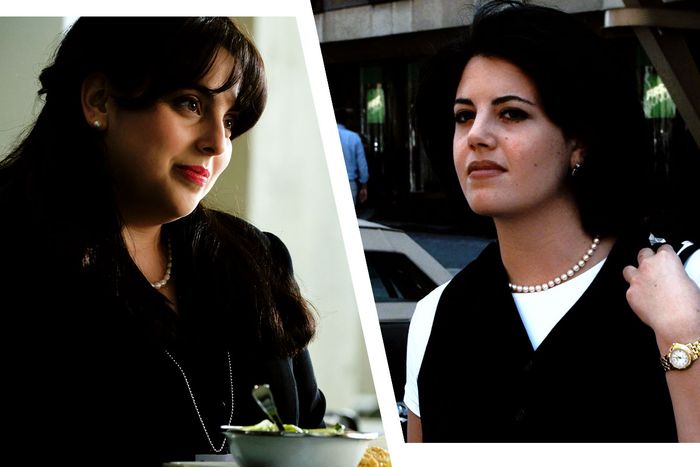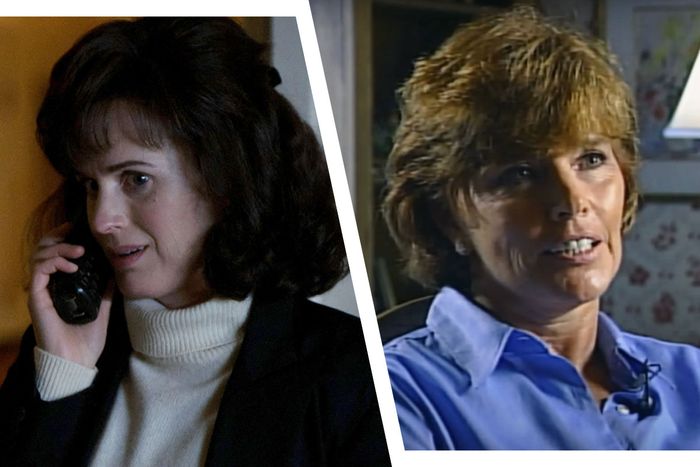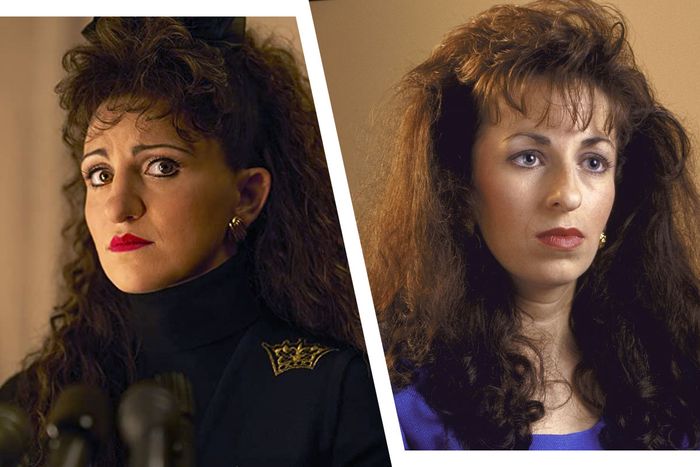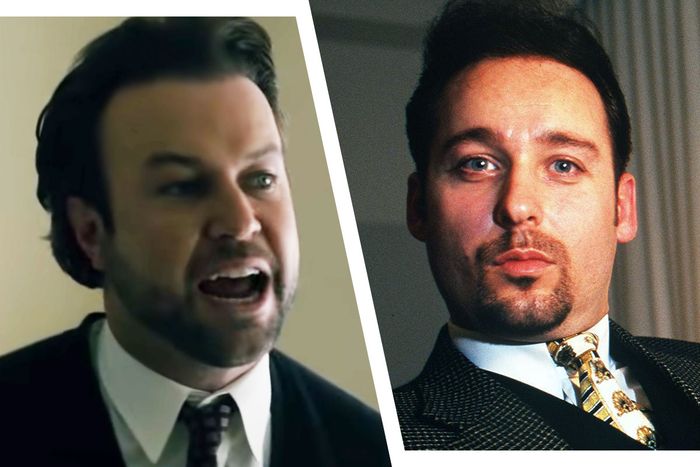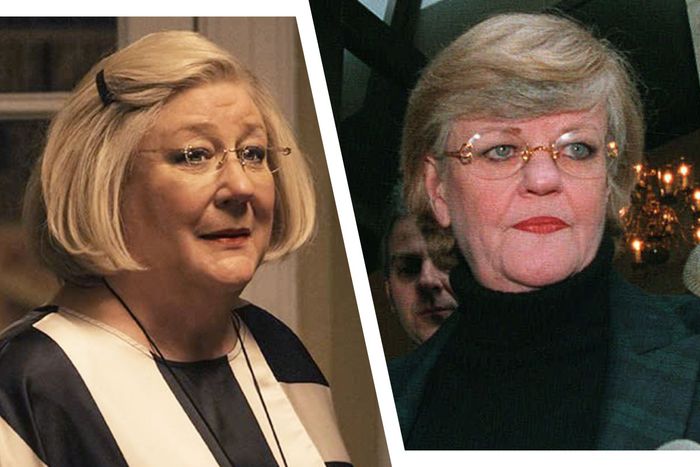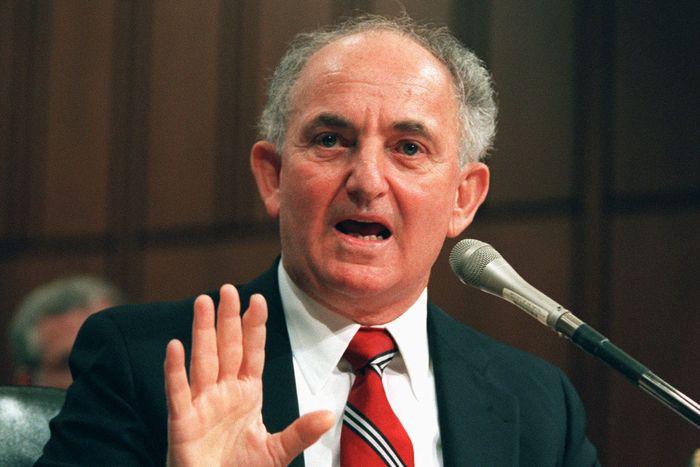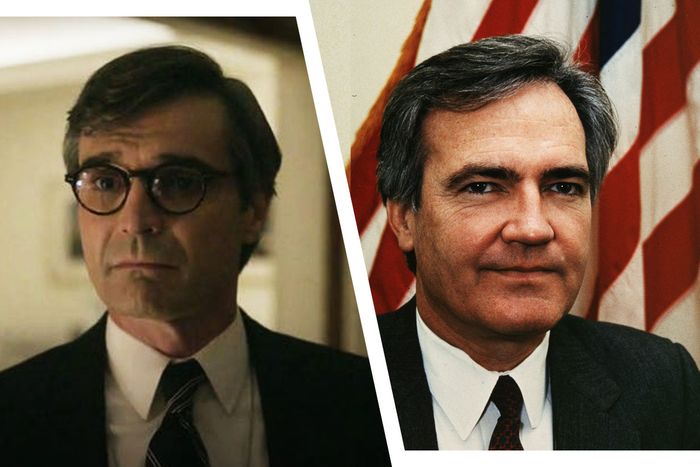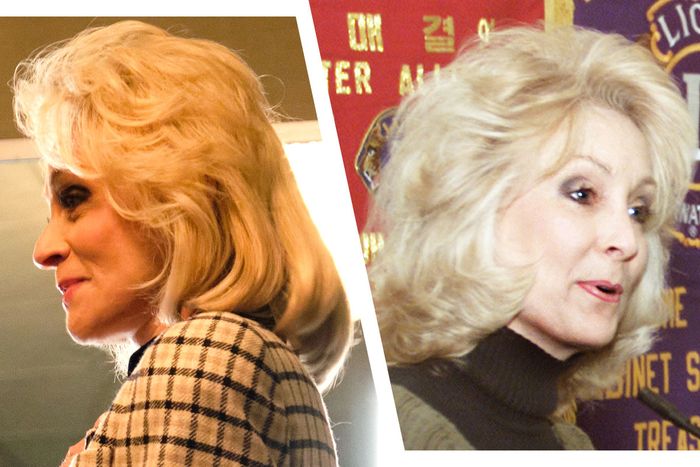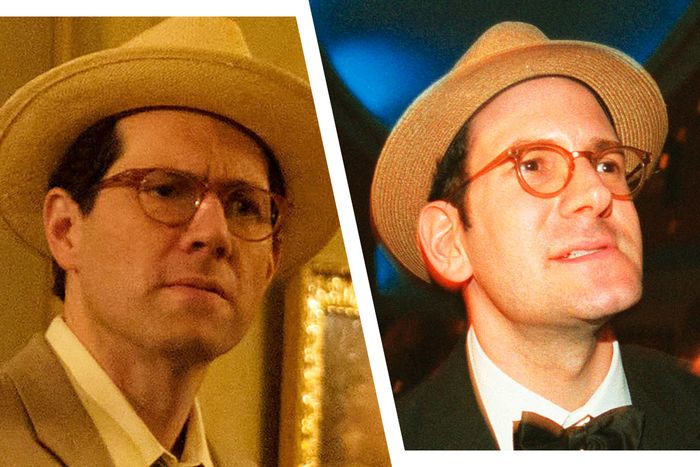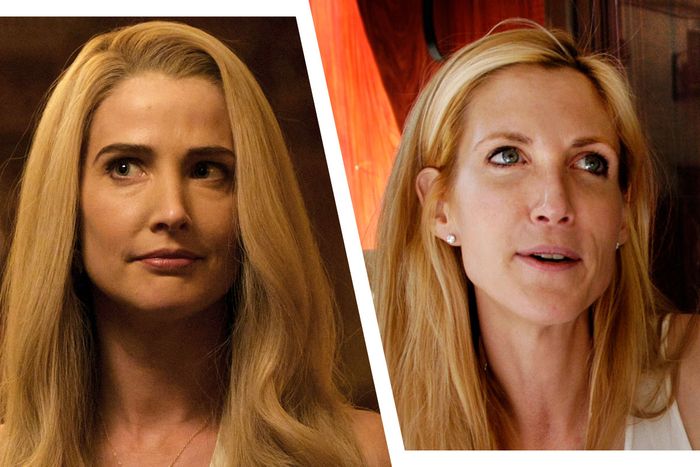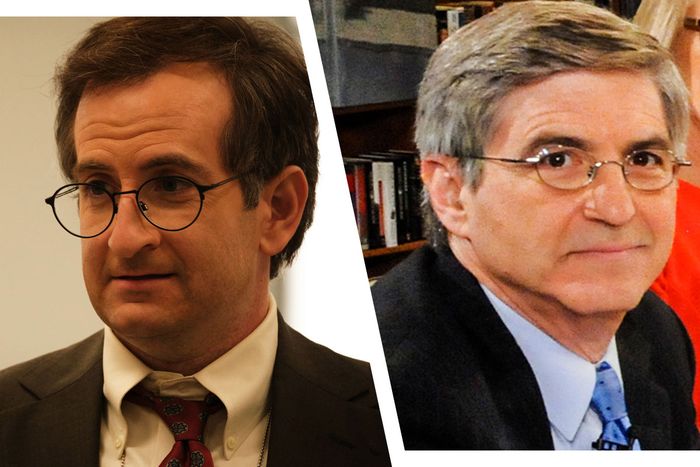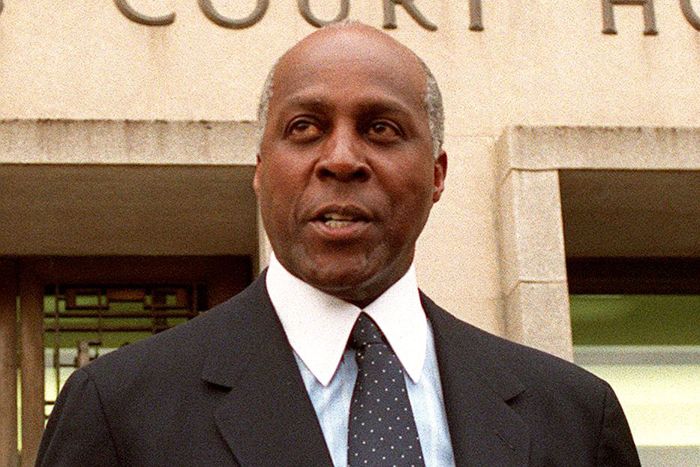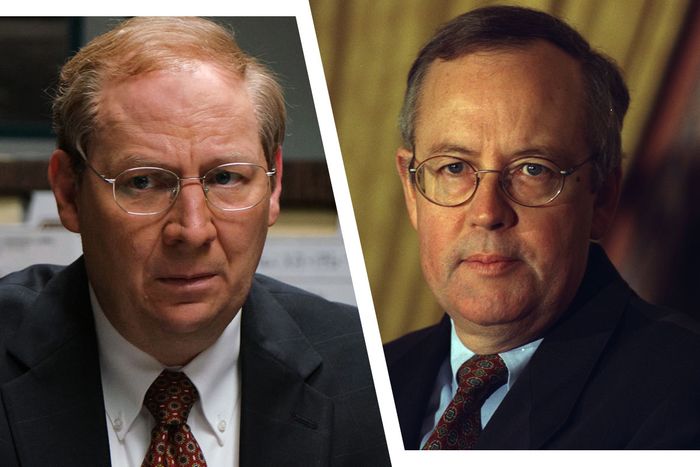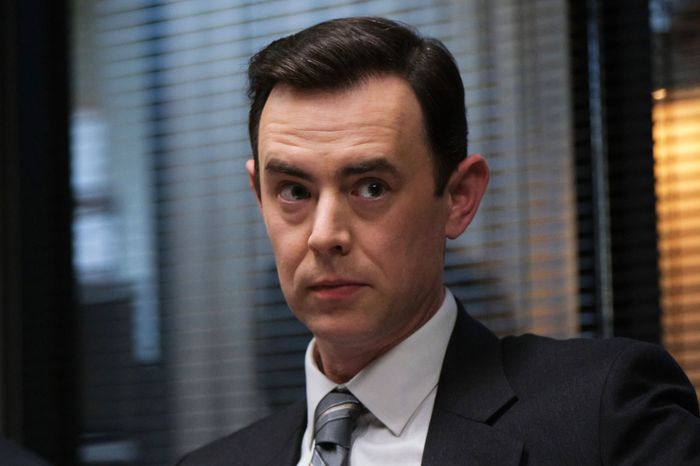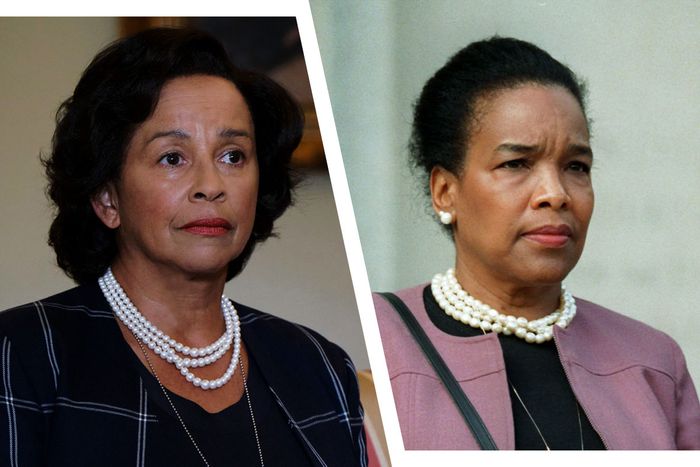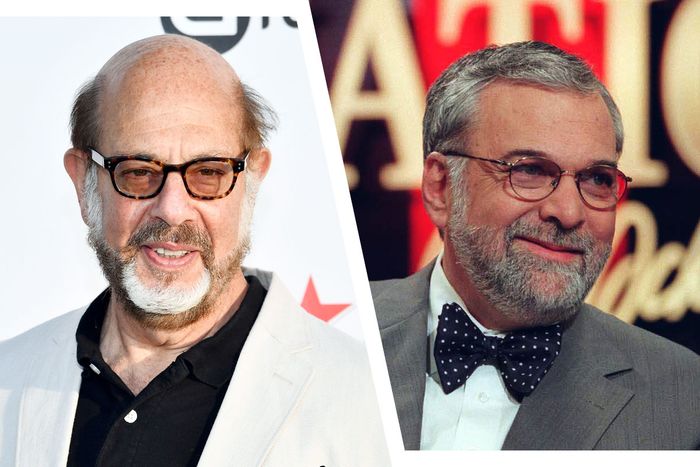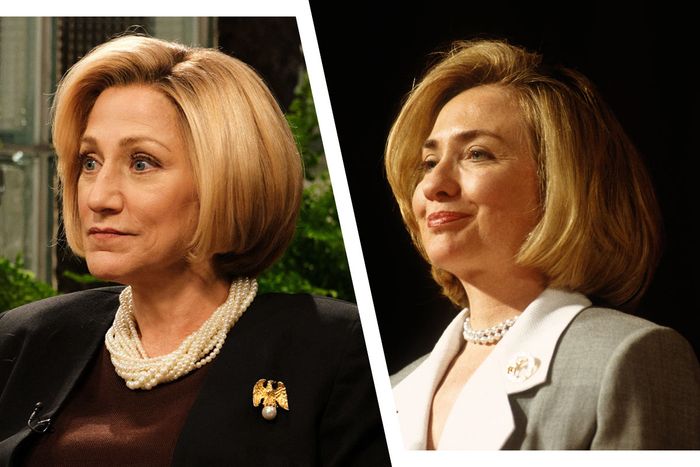
Ryan Murphy returns to the world of American Crime Story with the third installment in the anthology series, Impeachment. No, itÔÇÖs not about either of Donald TrumpÔÇÖs, but rather the one that dominated headlines a quarter-century ago, when President Bill Clinton was accused of ÔÇ£high crimes and misdemeanorsÔÇØ related to his relationship with an intern named Monica Lewinsky. Co-produced by Lewinsky herself, Impeachment seeks to shift the narrative of this true story from late-night jokes about the blue dress to how politics and jealousy affected the real women of this story.
Of course, this means a cast of performers embodying the real-life figures embroiled in the saga, from┬áhousehold names to those forgotten even by people who lived through the ÔÇÖ90s. So weÔÇÖre maintaining this regularly updated, roughly chronological guide to the historical figures of Impeachment, filling in some of the background the show misses and noting what Murphy and his team of writers have chosen to spotlight┬áÔÇö┬áand why.
Linda Tripp (Sarah Paulson)
Born in November 1949, Linda Rose Tripp grew up in New Jersey, getting a job at Fort Meade out of high school. A holdover from the Bush administration into the Clinton White House, she worked alongside Bernie Nussbaum and Vince Foster as special assistant to the counsel of the president. When Foster died by suicide after a series of scandals, Tripp became both convinced that she would soon be forced to testify in front of Congress about one of them and furious at a White House that appeared to let one of its most trusted soldiers fall. According to┬áthe Washington Post, she felt that ÔÇ£Clinton officials acted as though they had a lot to hide: rifling FosterÔÇÖs office, looking for God-knows-what. The whole thing seemed disrespectful to her, almost sordid.ÔÇØ
Not long after, Nussbaum would leave the White House, replaced by Lloyd Cutler. The meeting between Cutler, Tripp, and Kathleen Willey in the premiere episode is reportedly true, as is the fact that Tripp was pushed over to the PentagonÔÇÖs public-affairs office, which gave her a raise (that some questioned as a payoff) but a diminished role in the administration and, at least according to the show, loathsome working conditions.
Years later, in April 1996, this is where Linda Tripp would meet Monica Lewinsky. Reports differ as to whether Lewinsky explicitly told Tripp that her boyfriend drama involved the president before the 1996 election (as portrayed on the show), but Tripp claims she had figured it out. She would become an ally for Lewinsky through the rocky relationship, but a subpoena in the Paula Jones case (and a potential book deal) would lead Tripp to record her new BFF, a decision that serves as one of the major dramatic through-lines of Impeachment.
How much the ACS version of Linda Tripp deviates from the actual one is up for debate. The facts are pretty straightforward, give or take some timing on exactly when conversations took place, and the presentation of Tripp as a vengeful person who saw Lewinsky as a way to both put herself in the spotlight and take down the Clintons has some strong historical backing.
Monica Lewinsky (Beanie Feldstein)
In July 1995, a young California woman named Monica Lewinsky got an unpaid summer internship at the White House, specifically in the office of White House chief of staff Leon Panetta. Later that year, in December, she would move to a paid job at the White House Office of Legislative Affairs, but everything had already changed for Lewinsky by that point. According to her, she had nine sexual encounters with President Bill Clinton from November of that year to March of 1997. White House deputy chief of staff Evelyn Lieberman reportedly sensed that the president, who had been dogged by reports of sexual impropriety for years, had a fondness for Lewinsky, and so she was transferred to the Pentagon in April 1996 and reportedly told that she would return to the White House at a later date.
At the Pentagon, working under Kenneth Bacon, Lewinsky met Linda Tripp and told her about her relationship with Bill Clinton. Tripp would begin recording their conversations about the relationship, starting in September 1997, and everything would fall apart in 1998 when Lewinsky submitted an affidavit in the Paula Jones case denying the relationship that Tripp now had on tape. When Tripp gave the tapes to Kenneth Starr, the head of the Independent Counsel investigating the president, Monica Lewinsky became a household name. She would eventually be forced to testify before a grand jury and given transactional immunity by the Office of the Independent Counsel.
Impeachment: American Crime Story is clearly sympathetic to Lewinsky, and the fact that the former intern is a producer on the show likely strengthens the veracity of that side of the portrayal; it feels genuine, if impossible to fully confirm.
Bill Clinton (Clive Owen)
William Jefferson Clinton became the 42nd president of the United States on January 20, 1993, graduating from governor of Arkansas to the highest office in the land. His political pedigree is well-documented, but Impeachment is more concerned with his personal life, including repeated accusations of infidelity and sexual harassment by women like Paula Jones, Kathleen Willey, and Monica Lewinsky.
The first baby-boomer to be elected president, Clinton had numerous successes and scandals in his first term and was reelected in a landslide in 1996, but his second term would be dominated by the Lewinsky scandal. According to tapes recorded by Linda Tripp, Lewinsky and Clinton started a sexual relationship in November 1995. ItÔÇÖs a fact that Lewinsky was transferred to the Pentagon in April 1996, and the New York Times reported it was due to ÔÇ£inappropriate and immature behavior.ÔÇØ The real allegations broke in 1998, and the president was impeached for ÔÇ£high crimes and misdemeanorsÔÇØ on December 19 of that year.
So much of what Impeachment portrays regarding Bill Clinton is simply unverifiable, leaning into the presidentÔÇÖs soft-spoken southern charm as he romances Lewinsky and fends off accusations from Paula Jones and others. ItÔÇÖs likely that the specifics of the encounters between Clinton and Lewinsky have been given some creative license in terms of dialogue, but, given her role as a producer, this is really LewinskyÔÇÖs version of events. The dates and major turning points line up with the historical record, even if everything that happened behind closed doors never fully can. For example, Clinton really did give Lewinsky a hatpin, according to his own grand-jury testimony, but he claimed that it was no big deal and that he gave gifts all the time. Impeachment, however, makes that interaction into a very big deal indeed, ending the exchange with a kiss and the assertion, ÔÇ£We have to be really careful.ÔÇØ
Kathleen Willey (Elizabeth Reaser)
She wouldnÔÇÖt become tabloid fodder to the same degree as Monica Lewinsky or Paula Jones, but Kathleen Willey played a crucial role in the Impeachment saga. Kathleen and her husband Ed Willey were major donors to ClintonÔÇÖs 1992 campaign, and she was volunteering in the White House in July 1993, when Ryan MurphyÔÇÖs show opens. ThatÔÇÖs where she met Linda Tripp, and the two were friends, which is briefly captured in ÔÇ£Exiles,ÔÇØ the series premiere. Willey claims that President Clinton sexually assaulted her on November 29, 1993, embracing her, kissing her, touching her breast, and even moving her hand to his genitals. Willey told 60 Minutes in 1998 that she had gone to Clinton in the hope of getting a paying job because Ed was mired in debt after legal problems. (Ed actually killed himself on that same date that the encounter allegedly occurred between Willey and Clinton.)
Clinton has always vehemently denied that anything happened with Willey. A statement released after the 60 Minutes airing read, ÔÇ£He did not touch her, and she did not touch him, in any sexual manner.ÔÇØ American Crime Story doesnÔÇÖt show the event, but it does show Willey recounting it to Tripp, in a manner Tripp has claimed was ÔÇ£joyful.ÔÇØ In the real world, the meeting between Clinton and Willey would find its way into TrippÔÇÖs grand-jury testimony, where she would claim that Willey always wanted to romance Bill Clinton. Clouding the issue further, Tripp also believed that the meeting led to a part-time job in the White House just as Tripp was being shuffled off to the Pentagon, which Impeachment implies led to some personal animosity toward Willey. The show seems to embrace WilleyÔÇÖs assertion that Tripp vowed to get even ÔÇ£with everybody in this placeÔÇØ after being transferred.┬áHowever, in 1999, Tripp would shift gears and tell Larry King that she believed WilleyÔÇÖs recounting of events from 1993.
WilleyÔÇÖs story would be dogged by inconsistencies and accusations over the years, including a claim by a friend that she had been asked to lie to support it. She would go on to publish a book in 2007 called Target: Caught in the Crosshairs of Bill and Hillary Clinton, even going as far as to claim after its release that the Clintons funded a break-in of her house to try and see a manuscript before its publication. She launched an anti-Clinton website in 2015 and even appeared at that infamous press conference with Donald Trump before the second presidential debate in October 2016.
Paula Jones (Annaleigh Ashford)
There is no Bill Clinton impeachment saga without Paula Jones. When she was a state employee of the Arkansas Industrial Commission, Paula Jones attended the Annual GovernorÔÇÖs Quality Conference in Little Rock, Arkansas. She alleges that on May 8, 1991, then-Governor Bill Clinton called her to his room at the Excelsior Hotel, where he exposed himself and propositioned her.
Impeachment introduces Paula Jones in January 1994, almost three years later, and just after the release of a story in The American Spectator called ÔÇ£His CheatinÔÇÖ Heart,ÔÇØ by David Brock. In that piece, she is referred to only as ÔÇ£Paula,ÔÇØ and Brock alleges a trooper was told to approach Paula, ÔÇ£tell her how attractive the governor thought she was, and take her to a room in the hotel where Clinton would be waiting.ÔÇØ Something from the piece that was left out of PaulaÔÇÖs retelling in later years and the show is that ÔÇ£the trooper said Paula told him she was available to be ClintonÔÇÖs regular girlfriend if he so desired.ÔÇØ
The piece led Paula Jones to file a sexual-harassment lawsuit in May of 1994,┬ájust days before the statute of limitations would be up. She would initially be represented by two high-powered D.C. attorneys named Gilbert Davis and Joseph Cammarata; the show implies that Ann Coulter and her allies alerted the attorneys to the case to back it, but itÔÇÖs unclear if thatÔÇÖs true. What matters most is that the Jones case would prove a pattern of behavior with Clinton, and so it led to subpoenas for anyone who might be able to assist with that, including Linda Tripp and Monica Lewinsky.
Steve Jones (Taran Killam)
Played as a scowling lunkhead by SNL veteran Taran Killam, Steve Jones was a minor player in the Clinton-Lewinsky saga, so thereÔÇÖs significantly less reporting about the role he played in the toppling of a president. However, heÔÇÖs centered in Impeachment as a pressure point for his wife Paula Jones, aggressively pushing the case in a way that would change history. Embarrassed when his wifeÔÇÖs encounter with Bill Clinton is put in print, he helps bring the legal charges that would dog the president, and really serves as a catalyst for the whole Lewinsky debacle.
The way heÔÇÖs captured on Impeachment ÔÇö as a man willing to use the sexual harassment of his wife as a way to get himself a possible recurring role on Designing Women ÔÇö is also hard to confirm, but he never did end up on the sitcom. In fact, his last credit is the one dropped on the FX series, Jim JarmuschÔÇÖs 1989 film Mystery Train, one of only two credits on JonesÔÇÖs IMDb page. (The other is a comedy called Off the Mark from 1987.)
Lucianne Goldberg (Margo Martindale)
The great Martindale plays literary agent and author Lucianne Goldberg as a chain-smoking name-dropper who encourages Linda Tripp to write a book about what she knows about the White House. The real Goldberg was a longtime political power player, even working on John F. KennedyÔÇÖs Inaugural Committee ÔÇö she would later have to apologize to both Jacqueline Kennedy and Lady Bird Johnson for trying to auction a letter sent by the former to the latter. So boundaries were a little blurry for Goldberg long before Clinton.
She opened a PR firm in the ÔÇÖ60s called Lucianne Cummings & Associates and even opposed the womenÔÇÖs liberation movement in the ÔÇÖ70s through a group she founded called the Pussycat League (she really could have been on FXÔÇÖs last show about the era, Mrs. America, on which Martindale played Bella Abzug). Through the ÔÇÖ70s, she was a very controversial political figure, reportedly even paid by NixonÔÇÖs team to spy on George McGovern. (Spying and audio recordings would become major parts of her legacy.)
Goldberg became known for books that could be called hit jobs, gaining prominence through the work of Kitty Kelley (who would later sue her), and then through constantly talking up books about Whitewater, Vince Foster, and other potential ways to destroy Bill Clinton that never actually saw the light of day. She was even the agent for Murder in Brentwood, by Mark Fuhrman, before she got involved with Linda Tripp, eventually playing a major role in one of the most notable series of audio recordings in political history.
Bernie Nussbaum (Kevin Pollak)
When Bernie Nussbaum shouts in the series premiere that ÔÇ£they will not stop until they find a crime,ÔÇØ regarding a special counsel to look into Bill Clinton, he knows what heÔÇÖs talking about. Nussbaum was a senior member on the House Judiciary Committee staff that investigated Richard Nixon in 1973 and 1974. After analyzing the recordings of Nixon himself and presenting the results to the committee, the group voted to recommend impeachment. On that committee, he met a young Hillary Rodham, also on the staff. She had just met a man named Bill.
Years later, Nussbaum would publicly support ClintonÔÇÖs run for president, and so the former ally and experienced attorney was asked to be counsel to the president of the United States in 1993, and thatÔÇÖs the role heÔÇÖs filling when the show begins. In that position, he helped appoint Janet Reno and get Ruth Bader Ginsburg on the Supreme Court (a victory seen on the show), but he also struggled with the Whitewater investigation, a growing storm for which he encouraged the president to ignore pressure regarding that aforementioned special counsel. Clinton ignored this advice and started a process that eventually led to his impeachment. Clinton would later state in his memoir My Life that his biggest error as president was not obstructing justice or abusing his power over an intern, but rather not listening to Nussbaum regarding how political a special counsel would get. Nussbaum resigned in March of 1994 as the pressure to turn over documents related to Whitewater got too high. He was replaced by Lloyd Cutler, seen briefly on the series premiere.
Vince Foster (Matthew Floyd Miller)
He only appears briefly on Impeachment, but Vince Foster is still a major part of this story. He was born in Hope, Arkansas, and became childhood friends with a young man named Bill Clinton. In the ÔÇÖ70s, Foster would practice law in Little Rock, and he was the head of the Arkansas Bar Association, where he collaborated with a woman named Hillary Rodham ÔÇö she would become the first-ever female associate at the firm at which Foster worked. He remained friends with the Clintons throughout their time in Little Rock, reportedly even teaching Chelsea how to swim (as recounted in My Life).
So it made perfect sense that Vince Foster would be hired to work in the Clinton White House. He joined the staff of the White House Counsel in 1993 under Bernie Nussbaum, where he befriended Linda Tripp. According to reports after his suicide, Foster struggled with depression and anxiety from his first days in the White House. After Zoë Baird had to withdraw as an attorney general nominee because of Nannygate and multiple members of the travel office were fired because of Travelgate, Foster continued to spiral. Convinced that he would soon be dragged into congressional hearings, Foster killed himself on the morning of July 20.
On Impeachment, itÔÇÖs heavily implied that Linda Tripp thought she would be called in to testify about Nannygate, Travelgate, Whitewater, and the death of Foster. ItÔÇÖs hard to say how much of this is true and how much is dramatized, but Vince FosterÔÇÖs death likely amplified TrippÔÇÖs animosity toward an administration that allowed one of BillÔÇÖs best friends to take on such an emotional toll. According to the Baltimore Sun, ÔÇ£Linda was appalled by what happened after his death. She thought he was not treated well by the White House.ÔÇØ
Susan Carpenter-McMillan (Judith Light)
A California conservative lightning rod, Susan Carpenter-McMillan would eventually become the chief counselor and press spokesperson for Paula Jones, pushing her attorneys to fight Bill Clinton more stridently and really keeping the case afloat. Without her encouraging Paula to really make the president pay, Jones may have settled, and the subpoenas of Monica Lewinsky and Linda Tripp would have never happened. Carpenter-McMillan became a tabloid-TV staple as the scandal unfolded, saying things on Crossfire like, ÔÇ£I do not respect a man who dodges the draft, cheats on his wife, and exposes his wee-wee to a stranger.ÔÇØ
Carpenter-McMillan became a conservative activist in the ÔÇÖ70s, primarily pushing pro-life causes, a side of her that appears in ImpeachmentÔÇÖs second episode in the first meeting with JonesÔÇÖs attorneys. She became a news-show staple in the ÔÇÖ90s with headline-grabbing causes like chemical castration for paroled child molesters. She was perfect for the Paula Jones saga, and Impeachment captures how she acted as kindling for a growing fire.
Matt Drudge (Billy Eichner)
The third episode of Impeachment introduces Matt Drudge to the saga of Bill Clinton and Monica Lewinsky. Billy Eichner, a regular collaborator with Ryan Murphy, plays Drudge as an admirer of old-fashioned newsmen, an intrepid reporter who dresses like Walter Winchell and uses the modem to ÔÇ£crack openÔÇØ the world of journalism, reshaping the news business by using the internet to beat print and television media to the Clinton-Lewinsky story.
Impeachment accurately captures that Matt Drudge was working in the gift shop of CBS Studios in 1994 in Los Angeles when he started the first version of the Drudge Report, which began life as dispatches to his friends compiling the gossip he heard at the shop. He started his online career with a series of posts on the Usenet forum alt.showbiz.gossip, where his email newsletters would be posted. The fan base grew quickly, exploding from 1,000 email subscribers in 1995 to 85,000 by 1997. His first major scoop was breaking the news that Jack Kemp was to be the running mate of presidential candidate Bob Dole in 1996.
However, everything changed in 1998. As captured on the show, Drudge turned his relationship with Newsweek reporter Michael Isikoff into the first story about Bill Clinton and Monica Lewinsky. On January 17, the Drudge Report revealed that Newsweek was prepping a story about the president and the 22-year-old intern. The lede was simple but powerful: ÔÇ£At the last minute, at 6 p.m. on Saturday evening, NEWSWEEK magazine killed a story that was destined to shake official Washington to its foundation: A White House intern carried on a sexual affair with the President of the United States!ÔÇØ He would publish the name of Monica Lewinsky the next day.
It was a major moment in the history of journalism, one that ushered in the strain of strident conservatism that some argue led to Donald TrumpÔÇÖs presidency. As conservative writer David Horowitz said in 2018, ÔÇ£Matt Drudge broke the fraternity of the guardians of the culture.ÔÇØ Author Matthew Lysiak said when promoting his 2020 book Drudge Revolution that ÔÇ£Matt DrudgeÔÇÖs impact on the past three decades of presidential campaigns has been well chronicled, no more so than the 2016 election in which many credited Drudge for having propelled Donald Trump through the primaries and into the White House.ÔÇØ
Ann Coulter (Cobie Smulders)
American conservative journalist and author Ann Coulter has been one of the most divisive figures of the political landscape for the last quarter-century, and it was the Clinton-Lewinsky scandal that launched her into the public consciousness. Coulter was an active opponent of the Clinton administration from its inception, and Impeachment captures how she and her allies were searching for ways to topple the presidency when the biggest scandal of the era came across their radar.
Coulter studied law at the University of Michigan before getting a job as an aide to Senator Spencer Abraham. She used that position to obtain a job with the Center for Individual Rights, where George Conway asked her to help out with the case of Paula Jones as an adviser. She would reportedly pull the strings (including leaking the detailed description of Bill ClintonÔÇÖs genitals) to the press in an effort to derail a settlement, and because she truly considered Jones a victim. Newsweek reporter Michael Isikoff would claim in his book that Coulter said, ÔÇ£We were terrified that Jones would settle. It was contrary to our purpose of bringing down the President.ÔÇØ
As the Lewinsky scandal unfolded, Coulter would become one of the most public anti-Clinton faces in the world, even releasing a best-selling book in October 1998 in the midst of the scandal titled High Crimes and Misdemeanors: The Case Against Bill Clinton. Her inflammatory style made her a household name; she churned out books through the ÔÇÖ00s and ÔÇÖ10s and became a staple on conservative talk shows. She has always embraced her partisanship ÔÇö her third book is titled Treason: Liberal Treachery From the Cold War to the War on Terrorism and a 2006 one is called Godless: The Church of Liberalism. ItÔÇÖs a remarkable career that was launched by the cases of Paula Jones and Monica Lewinsky.
Michael Isikoff (Danny A. Jacobs)
As Impeachment captured in its third episode, the main role Newsweek reporter Michael Isikoff had in the Lewinsky scandal was to wait to publish a story about the presidentÔÇÖs affair with an intern, and to tell his friend Matt Drudge about it. Isikoff was a reporter at Newsweek, where he was investigating the Paula Jones scandal, which led him to Kathleen Willey. She told Isikoff that she had shared her story with her friend Linda Tripp. As captured on Impeachment, Tripp told Isikoff that there was a much bigger story about to explode.
In October 1997, Linda Tripp and Lucianne Goldberg approached him with the story about Monica Lewinsky, reportedly with tapes in hand, but he needed further confirmation. Three months later, Matt Drudge would break the story, and the dominoes would fall in a way that would make history. Isikoff would stay peripherally involved as reporters descended on Bill and Monica, releasing his detailed reporting in an April 1999 book called Uncovering Clinton, and even claiming in 2018 that Tripp had offered him the famous little blue dress as evidence.
Isikoff would remain very active in political journalism. He worked at NBC News and is currently the chief investigative correspondent for Yahoo News. In 2006, he wrote a book about the war on terror titled Hubris: The Inside Story of Spin, Scandal, and the Selling of the Iraq War, and in 2018, he published Russian Roulette: The Inside Story of PutinÔÇÖs War on America and the Election of Donald Trump.
Vernon Jordan (Blair Underwood)
In the fourth episode of Impeachment, Vernon Jordan is introduced into the Clinton-Lewinsky scandal when he interviews Monica about a potential job in New York City with Revlon, where Jordan served on the board. Jordan couldnÔÇÖt have known then the role he would play in an international scandal, as the job offer would be seen as a quid pro quo related to LewinskyÔÇÖs relationship with the president of the United States.
Vernon Jordan was an esteemed public figure long before he met Bill Clinton and before Monica Lewinsky was even born. Raised in Atlanta, Jordan graduated from DePauw University in 1957, as the only Black student in a class of 400, before returning to practice law in Georgia, where he would be a leader in the civil rights movement. In the ÔÇÖ60s, he was the Georgia field director of the NAACP and became executive director of the United Negro College Fund in 1970 and president of the National Urban League in 1971.
A friend to the Clintons, Jordan helped with BillÔÇÖs transition into the White House in 1993. Years later, the New York Times would describe him as a power broker for the president, a good friend who was also a political adviser, someone who urged Clinton to back NAFTA, helped Warren Christopher ascend to become secretary of state, and ÔÇ£sounded outÔÇØ Colin Powell for a Cabinet job.
His role in the impeachment of Bill Clinton began when he agreed to help Monica Lewinsky secure a job in New York City and later recommended an attorney who represented her. It would lead independent counsel Ken Starr to depose Jordan and for him to testify in front of the grand jury as to what he knew about the Clinton-Lewinsky relationship and when he knew it. According to reports, Jordan claimed to have been assured by both Clinton and Lewinsky that they werenÔÇÖt in a sexual relationship and that he was unaware of her role as a witness in the Paula Jones case when he agreed to help.
Years later, Jordan would request that the government pay his sizable legal bills ($302,719) related to the Lewinsky scandal. This was denied by the United States Court of Appeals for the District of Columbia Circuit, which ruled he was entitled to only $1,215.
Kenneth Starr (Dan Bakkedahl)
One of the highest-profile players in the Clinton-Lewinsky scandal had been appointed an independent counsel to investigate both the Whitewater real-estate case and the suicide of Vince Foster. As these investigations were unfolding, the landscape around President Bill Clinton changed, first with the case of Paula Jones and then the saga of Monica Lewinsky, which Starr argued led the president of the United States to commit perjury and obstruction of justice.
A Duke graduate and Washington, D.C., attorney, Starr was nominated by Ronald Reagan to the United States Court of Appeals in 1983, where he sat until 1989. At that point, he was appointed the United States solicitor general under George H. W. Bush. During that tenure, he was even considered for a Supreme Court seat (the one that would eventually go to David Souter).
His role in history would really start in August of 1994, when he was appointed to a three-judge division to investigate Whitewater. However, the Ethics in Government Act gave Starr great latitude to spread his investigation to other aspects of the Clinton presidency, leading him to the unfolding Paula Jones scandal and lawsuit. In ClintonÔÇÖs deposition in that case, he denied a sexual relationship with Monica Lewinsky, but Starr had received the tapes from Linda Tripp and believed this meant the president had perjured himself.
StarrÔÇÖs investigation and the subsequent impeachment of President Clinton led to him being co-named Man of the Year by Time in 1998, alongside Clinton himself. He would return to private practice after five years as independent counsel, but he would still be involved in some major cases, including a defense of Jeffrey Epstein in 2007 and the controversy over his tenure as president of Baylor University, where he was accused of failing to investigate reports of sexual violence on campus. He even argued on President Donald TrumpÔÇÖs behalf during the impeachment trial of January 2020, contradicting several arguments that he had made 22 years earlier.
Mike Emmick (Colin Hanks)
Episode six of Impeachment centers Colin Hanks as Mike Emmick, the man who brought in Monica Lewinsky and tried to turn her into a witness against President Clinton, using some controversial tactics to do so. HeÔÇÖs not as prominent a face or name as some of the other players in this saga, but heÔÇÖs a key figure in the way Ryan Murphy and company have chosen to dramatize one of the worst days of LewinskyÔÇÖs life.
Much of what happens in the sixth episode of Impeachment can be historically traced back to Monica Lewinskys grand-jury testimony. (She even reveals in it that she made Linda stay in the room, a beat that gives the episode some intense drama.) She states in that testimony that Mike Emmick was the man who brought her into that room at the Ritz-Carlton, telling her that Janet Reno had sanctioned Ken Starr to investigate my actions in the Paula Jones case, that they  that they knew that I had signed a false affidavit, they had me on tape saying I had committed perjury  that I could go to jail for 27 years, they were going to charge me with perjury and obstruction of justice and subornation of perjury and witness tampering and something else. (For some reason thats changed to 28 years in the show.) So Mike Emmick was the man who dropped the curtain on Monica Lewinskys role in what would become one of the biggest presidential scandals of all time.
EmmickÔÇÖs handling of Lewinsky would prove controversial. As seen on Impeachment, Emmick and his team kept Lewinsky isolated, confronting her without her attorney, arguing that she was a part of the criminal investigation. A report done in 2000 but not released until 2014 would state that the Office of Independent Counsel lawyers, and Emmick in particular, erred in judgment. The report concluded, ÔÇ£We find that OIC conduct was influenced, and indeed largely driven, by the poor judgment Emmick exhibited in his formulation and execution of the approach to achieve LewinskyÔÇÖs cooperation. The Department requires far greater respect for an individualÔÇÖs choice of attorney, for attorney-client relationships, and for the role of defense attorneys in the process than that exemplified in this case.ÔÇØ
Betty Currie (Rae Dawn Chong)
The personal secretary to President Bill Clinton, Betty Currie became a major player in the impeachment saga thanks to her role as a liaison between the world leader and Monica Lewinsky herself. As captured on the FX show, Currie handled the gifts given to Lewinsky by Clinton, leading to her being forced to testify in front of the grand jury regarding the perjury allegations against her former boss.
Betty Currie had worked for multiple governmental bodies in Washington, D.C., before being hired by Clinton, including the Navy, United States Postal Service, and Department of Health and Human Services. She was employed in the campaign offices of Walter Mondale in 1984 and Michael Dukakis in 1988 before joining ClintonÔÇÖs in 1992, where she worked alongside election mastermind James Carville. After ClintonÔÇÖs win, she stayed on as his personal secretary, holding that position for both of his terms.
Betty Curries role in the Lewinsky scandal had to do with the manner in which her secretarial and assistant duties intersected with covering up what happened between the president and the intern. According to testimony in 1995, Clinton would use Currie to set up meetings, including the giving of Christmas gifts. She would later retrieve those gifts from Lewinsky after they were subpoenaed by the attorneys for Paula Jones, including a hatpin, a T-shirt, and Walt Whitmans Leaves of Grass, hiding them under her bed. Lewinsky even told people, according to the BBC, that she gave the gifts to Currie as a little bit of an assurance to the President  that everything was okay.
Currie also played a role in the allegations of obstruction of justice. As captured in Impeachment episode seven, she was reportedly brought into the presidentÔÇÖs office and encouraged to say that Clinton and Lewinsky were never alone. And yet Currie would stand by Clinton in front of the grand jury, testifying that it was her idea to bring in Vernon Jordan to get Lewinsky a job and that it was MonicaÔÇÖs decision to give back the gifts and not ClintonÔÇÖs, both of which testimonies were seen as hits to StarrÔÇÖs case.
After the scandal, Betty Currie returned briefly to D.C. with a position answering phones for the co-chairman of president-elect Barack ObamaÔÇÖs transition team, John Podesta. She is now retired.
William H. Ginsburg (Fred Melamed)
In the early days of the Lewinsky-Clinton scandal, one of the most prominent faces was that of Bill Ginsburg, the attorney for the embattled intern. He once made appearances on five Sunday-morning talk shows in a single day, a feat that was then reportedly referred to as a ÔÇ£full GinsburgÔÇØ.
Ginsburg was based out of Los Angeles, having graduated from USC Gould School of Law in 1967 and passed the California bar exam in 1968. A family friend of the Lewinskys, he was specializing in medical malpractice when the scandal broke, first hearing about it on January 16, 1998, the day that Lewinsky was approached by the FBI and U.S. attorneys at the Ritz-Carlton. As captured in episode six of Impeachment, Monica spoke to her mother, who spoke to her ex-husband, who brought in Ginsburg. He flew to Washington the next day.
In May of that year, Ginsburg published an open letter to Kenneth Starr in a magazine titled California Lawyer. (The letter was reprinted in the Washington Post.) Ginsburg aggressively criticized the invasion of privacy and bullying of the independent counsel, writing, ÔÇ£I call on all Americans to rise up and react to your dangerous abuse of power, for none of us can rest easy as long as anyoneÔÇÖs right to privacy is threatened.ÔÇØ Ginsburg ended up representing Monica for only four months before being let go.
He would go on to handle a number of major public cases, including the death of Hank Gathers and a dispute over the remains of Liberace, as well as hundreds of other cases in 21 states. He died of cancer in 2013.
Hillary Clinton (Edie Falco)
The woman who would come closer to becoming president of the United States than any woman in history played a complex role in the impeachment scandal involving her husband. After years of deflecting accusations about her husbandÔÇÖs infidelity, her response to the very public reports about BillÔÇÖs sexual proclivities would have an impact on her entire political and personal legacy.
Born in 1947, Hillary Rodham met Bill Clinton in the spring of 1971, marrying him in October of 1975. From the beginning, she was her own politician (even keeping her last name after her marriage, according to Carl BernsteinÔÇÖs A Woman in Charge: The Life of Hillary Rodham Clinton). As her husband climbed the political ladder in Little Rock, she worked there as an attorney specializing in patent infringement. After she co-founded the Arkansas Advocates for Children and Families in 1977, Jimmy Carter appointed her to the board of directors of the Legal Services Corporation, a position she held until 1981. She was the First Lady of Arkansas from 1979 to 1981 and from 1983 to 1992, and she gave birth to their only child, Chelsea, in 1980.
She held multiple positions in the ÔÇÖ80s and became a major adviser on public policy after her husband was elected president. She reportedly picked many of the top-level positions of the Clinton cabinet, even being called ÔÇ£the most openly empowered presidential wife in American history, save for Eleanor Roosevelt.ÔÇØ She led a task force on national health-care reform in 1993 and would later lead initiatives regarding childrenÔÇÖs health, violence against women, and the enactment of the Adoption and Safe Families Act, which she would cite as her greatest achievement as First Lady.
As the Lewinsky scandal broke, Hillary Clinton stood by her husband in a very public way, calling the allegations part of a ÔÇ£vast right-wing conspiracy.ÔÇØ Books about the scandal would argue that she had been misled at the beginning by her husband and the response to her decision to stand by Bill would vary. She wrote in her 2003 memoir that ÔÇ£no one understands me better and no one can make me laugh the way Bill does. Even after all these years, he is still the most interesting, energizing and fully alive person I have ever met.ÔÇØ
Years later, even after she ran for president herself, Hillary Clinton was still forced to answer questions about Monica Lewinsky. In 2018, on CBS Sunday Morning, she asserted that the affair was never ÔÇ£an abuse of power,ÔÇØ reigniting debate about the scandal.
More From This Series
- The Limits of the WomenÔÇÖs Redemption Plot
- Fact-checking ImpeachmentÔÇÖs Final Act
- Impeachment: American Crime Story┬áSeason-Finale Recap: MonicaÔÇÖs Story



